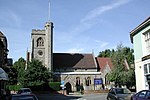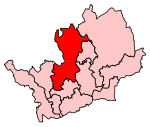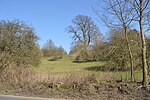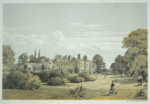Guessens
Grade II* listed buildings in HertfordshireHouses in HertfordshireTimber framed buildings in HertfordshireUnited Kingdom listed building stubsWelwyn
Guessens is a Grade II* listed timber-framed house at 6 Codicote Road, Welwyn, in Hertfordshire, England. It was built in the early 17th century and has later additions. From 1730 to 1765 it was the residence of the poet and dramatist Edward Young, who was also rector of Welwyn.
Excerpt from the Wikipedia article Guessens (License: CC BY-SA 3.0, Authors).Guessens
Codicote Road, Welwyn Hatfield
Geographical coordinates (GPS) Address Nearby Places Show on map
Geographical coordinates (GPS)
| Latitude | Longitude |
|---|---|
| N 51.83176 ° | E -0.2155 ° |
Address
Codicote Road
Codicote Road
AL6 9NB Welwyn Hatfield
England, United Kingdom
Open on Google Maps





